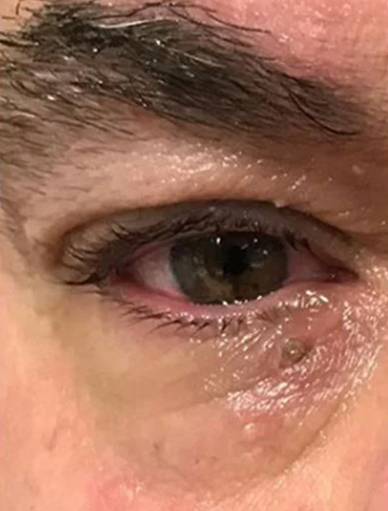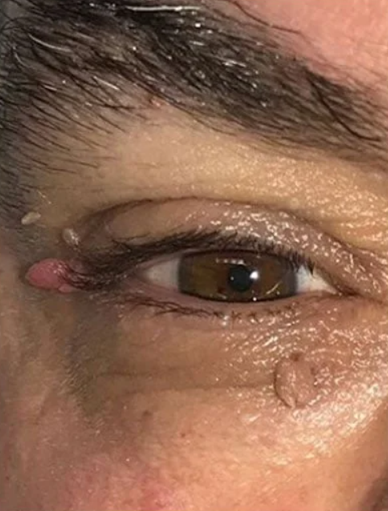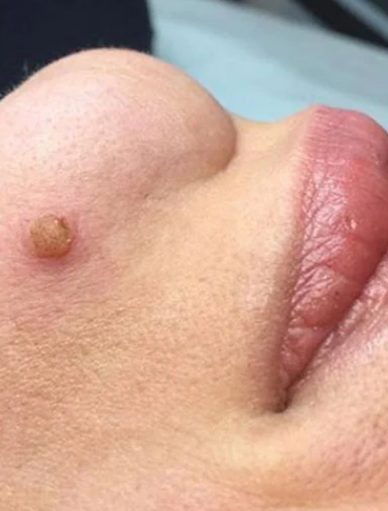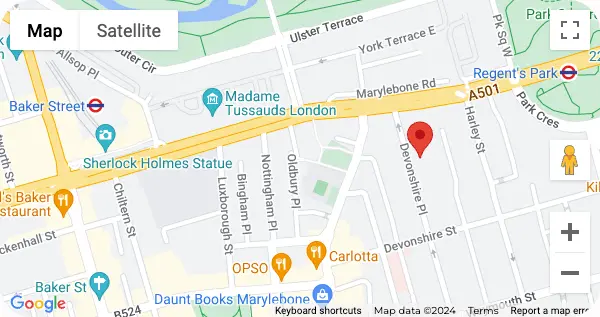Summary Box:
- Healing time:
- Shave takes about 1 week
- Surgical removal up to weeks
- Laser heals in about 7 days
- Freezing or cryotherapy takes 1 to 2 weeks.
- Keep the wound clean, attend to your GP for follow-up, use gentle moisturiser, protect from the sun, and watch for signs of infection.
- Do not pick the skin, do not use harsh products, do not swim or exercise until cleared by your GP, do not ignore changes, and do not miss follow-up visits.
- Follow the NHS advice for proper aftercare, see your GP when needed, and always use daily sun protection once the wound has healed.
Introduction
Moles are small clusters of skin cells and removing them is common in many clinics in the UK. People choose mole removal for many reasons, one is health concerns, second is for cosmetic reasons, and third simply for their peace of mind if a mole looks suspicious.
The procedure itself is fast but the post procedure care is essential. In this guide, you will learn the 5 most important do’s and don’ts of mole removal aftercare. Plus extra tips for different procedures. Choosing it done privately or through the NHS, the main rules for aftercare stay the same.
Why Aftercare Matters
After a mole is removed, your skin goes through different healing process:
- First few days (inflammatory phase): The area may look red, swollen, or sore.
- Next 2 to 3 weeks (proliferative phase): New skin tissue starts to grow and cover the wound area.
- Next few months (maturation phase): The scar will slowly soften, fade, and blend in with the rest of your skin.
Things like not cleaning the wound, picking at scabs, or ignoring signs of infections can take proper healing longer if you do not properly care for the wound.
Most people will also have follow-up visits after removing their moles. Your doctor may remove stitches, explain test results if the mole was checked for skin cancer, and make sure the wound goes through a natural healing process.
Common Mole Removal Procedures:
There are several ways to remove a mole and each one varies slightly in healing times and aftercare needs.
| Procedure | What Happens | Healing Time | Aftercare Tips |
| Shave excision | Mole is shaved flat | 7 to 10 days | Keep the skin clean, pink mark will fade eventually |
| Surgical excision | The mole is cut out with a little bit of skin surrounding the mole. | 10 to 14 days | Visit GP for stitch removal and follow-up |
| Laser removal | Laser light removes mole without cutting | 5 to 7 days | Protect from sun exposure |
| Cryotherapy | Liquid nitrogen is used to freeze and remove the mole | 1 to 2 weeks | Allow blister to heal naturally |
The Do’s of Aftercare:
- Keep the wound clean and dry
Do not get the area wet for the first 1 to 2 days. After that, wash it gently with mild soap and warm water. Dry with a clean towel. Your doctor may also suggest using petroleum jelly or an antibiotic ointment to keep the wound moist.
Related reading: How to Choose the Best Moisturiser for Sensitive Skin
- Visit your doctor for follow-up check
A follow-up visit is essential. Your doctor will assess your wound to ensure optimal healing. Skipping this appointment could delay important care.
Learn more: When Should You See a Dermatologist in London?
- Use the right moisturiser or ointment
Options like Vaseline help keep the wound site soft and will stop the thick scab to form. Always check with your doctor the safe creams and ointments that would not irritate your skin and promote healing.
Related advice: Top 5 Scar Reduction Treatments That Work
- Protect the skin from the sun
Once the wound has closed, always apply broad spectrum sunscreen SPF 30+ daily and wear protective clothing to shield the area from the sun. This will prevent dark marks or noticeable scars, especially on the face, since the freshly healed skin is very sensitive to sunlight.
See also: Laser Skin Resurfacing: What to Expect
Watch for signs of infection
Some redness and tenderness is normal, but call your GP if you notice:
- The redness or swelling gets worse
- Yellow or green fluid
- Warmth or mild pain
- Fever or unwell feeling
The Don’ts of Aftercare
- Don’t scratch or pick the wound
Leave the scabs and peeling skin alone. Picking slows healing, can cause irritation, and may leave a scar. Let the natural healing process take effect.
- Don’t use harsh products
Do not use products with alcohol or strong acids on the surrounding area. These can irritate and delay healing and smooth recovery. Only use gentle soap and plain moisturiser until your doctor says otherwise.
- Don’t do hard exercise too soon
Avoid swimming, heavy lifting, or strenuous workouts in the first 1 to 2 weeks. These can pull on the healing skin or expose it to germs when exposed to excessive sweat.
- Don’t ignore unusual changes
Tell your GP if you notice that young is bleeding, strange regrowth, or mole returning. About 5 to 10% of shaved moles grow back, so it is best to get it checked.
- Don’t miss follow-up visit
Even if the wound looks fine, your doctor may see signs of problems you would not notice, like thickening scars or infection. Always go to your follow up.
Effective & professional doctor-led Mole Removal Aftercare at our central London clinic
Verified Before & After
Verified Before & After
Special Considerations
It takes about 5 to 7 days for the wound to heal. The skin will form a light crust instead of a thick scab. Keep the area protected from the sun and avoid makeup until completely healed.
- Mole removal at the back
After removing the mole at your back, your skin can easily get irritated because of clothing and lying down. Use secure dressings, try not to sleep flat on your back for a few nights, and ask someone to check your wound daily.
- Surgical mole removal
You can shower after 24 hours if you have stitches, but do not take long baths, swim, or use hot tubs until your GP says it is safe. Stitches are usually removed in 10 to 4 days.
- NHS care and advice
With the NHS, you may be given wound care instructions, and follow-up visits. Call NHS 111 or see a GP quickly if you notice any unusual side effects.
Conclusion
Taking care of your skin after mole removal is an easy but very important thing to do. Keeping the area clean, protecting it from irritation, giving it time to heal, and not skipping the follow-up visit are simple steps that will help your skin heal properly, it also lowers the risk of problems, and minimizing scarring and mild discomfort.
If ever you are unsure about how your wound is healing, consult your GP, the NHS, or a trusted clinic for proper advice.
FAQs
- How long does healing of removed moles take?
- Shave excision takes 7 to 10 days
- Surgical excision with stitches takes about 10 to 14 days
- Laser removal take about 5 to 7 days of crusting
Scars usually fade within 6 to 12 months.
- Can I shower after mole removal?
Yes, after 24 hours. Avoid bath tubs, pools, or hot tubs until the wound fully heals.
- When can I swim or exercise again?
Light activity is fine after about a week. Wait for two to three weeks before swimming or doing heavy workouts.
- Will it scar?
A small scar is normal, but post procedure care treatments like silicone gels can eventually make it fade.
- Can a mole grow back?
Yes, most moles have about 5 to 10% chance after a shave removal. But in surgical excision there is a low recurrence rate.
- When should I see a doctor?
If you see signs of infection, unusual changes or the mole growing back, contact your GP.
Reserve a mole removal appointment
One of our experts will be more than happy to answer any questions you have.
Book AppointmentKatia T
★★★★★
Excellent service
12th December 2025
Claudia Baillie
★★★★★
Excellent service. Would recommend
12th December 2025
Sulamita Mileškaitė
★★★★★
Amazing clinic and very helpful staff they definately take good care of their patients. I'll be coming back. Thank you.
11th December 2025












